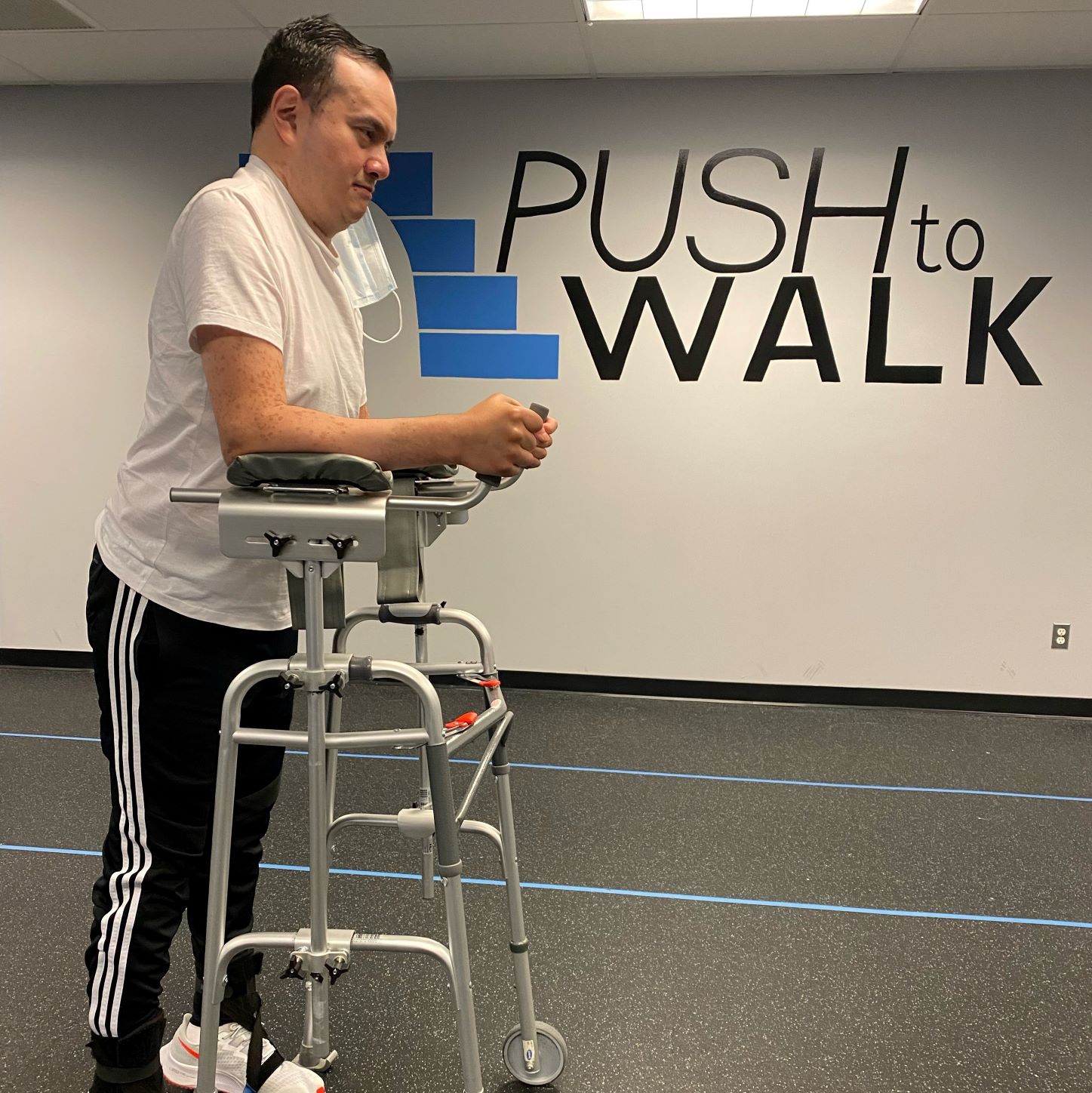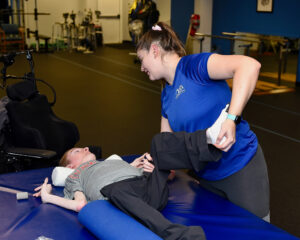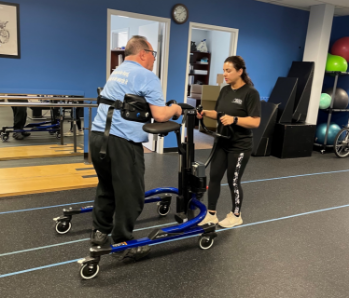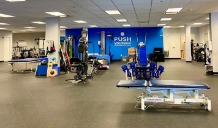Understanding Strokes
Over 17% of Push to Walk’s (PTW) clients have had either a stroke, Hereditary Spastic Paraplegia Transverse Myelitis, or a blood clot resulting in some degree of paralysis. A stroke occurs when the supply of blood to the brain is reduced or blocked completely, which prevents brain tissue from getting oxygen and nutrients.
The main symptoms of a stroke are paralysis or numbness in the face, arms, and legs, confusion and trouble speaking, trouble seeing, difficulty walking, and a headache, which can occur with vomiting. A stroke is the single most common nervous system disorder in the US. There are two types of strokes: ischemic and hemorrhagic. An ischemic stroke is when a cerebrovascular accident (CVA) occurs, blood circulation to a brain area is blocked and the tissue dies. A hemorrhagic stroke is when blood from an artery begins bleeding into the brain. This happens when a weakened blood vessel bursts and bleeds into the surrounding brain. Pressure from the leaked blood damages brain cells, and, as a result, the damaged area is unable to function properly. This usually results in hemiplegia (paralysis that affects one side of the body), and sometimes also sensory deficits or difficulty understanding or vocalizing speech.
Some people who have suffered a stroke recover at least part of their lost faculties because damaged neurons sprout new branches that spread into the injured area and take over some lost functions.
Stroke Recovery
Recovery time after a stroke is different for every individual. Some people can fully recover, and others can have lifelong disabilities.
If you have had a stroke, you can make great progress in regaining your independence. However, some problems may continue such as paralysis, weakness, or both on one side of the body, trouble speaking, memory issues, numbness, and bladder control.
Once a patient is medically stable, the focus of their recovery shifts to rehabilitation. The patient and their family/caregivers also play an integral role on this team. Family/caregivers that are involved in the patient care tend to be prepared for the caregiving role as the patient transitions from rehabilitation centers. While working out at Push to Walk, the trainers make sure that the patient attains their maximum functional potential.
The primary goals of recovery include preventing secondary health complications, minimizing impairments, and achieving functional goals that promote independence in activities of daily living.

Stroke Physical Rehabilitation
Regardless of symptoms, at the most basic level, Push to Walk’s trainers are looking for ways to target and excite the nervous system. Positional movements, load-bearing activities, active-assistive exercises, developmental movement patterns, and so forth are all aimed at eliciting a response from the damaged nervous system and re-educating the body to work the way it was designed.
Push to Walk has several pieces of specialized equipment such as standing frames, tilt table, Total Gym, LiteGait, Iform, and more. This equipment — along with our trainers — can help our clients with gait training, balance, activities of daily living, strength, and stability.




